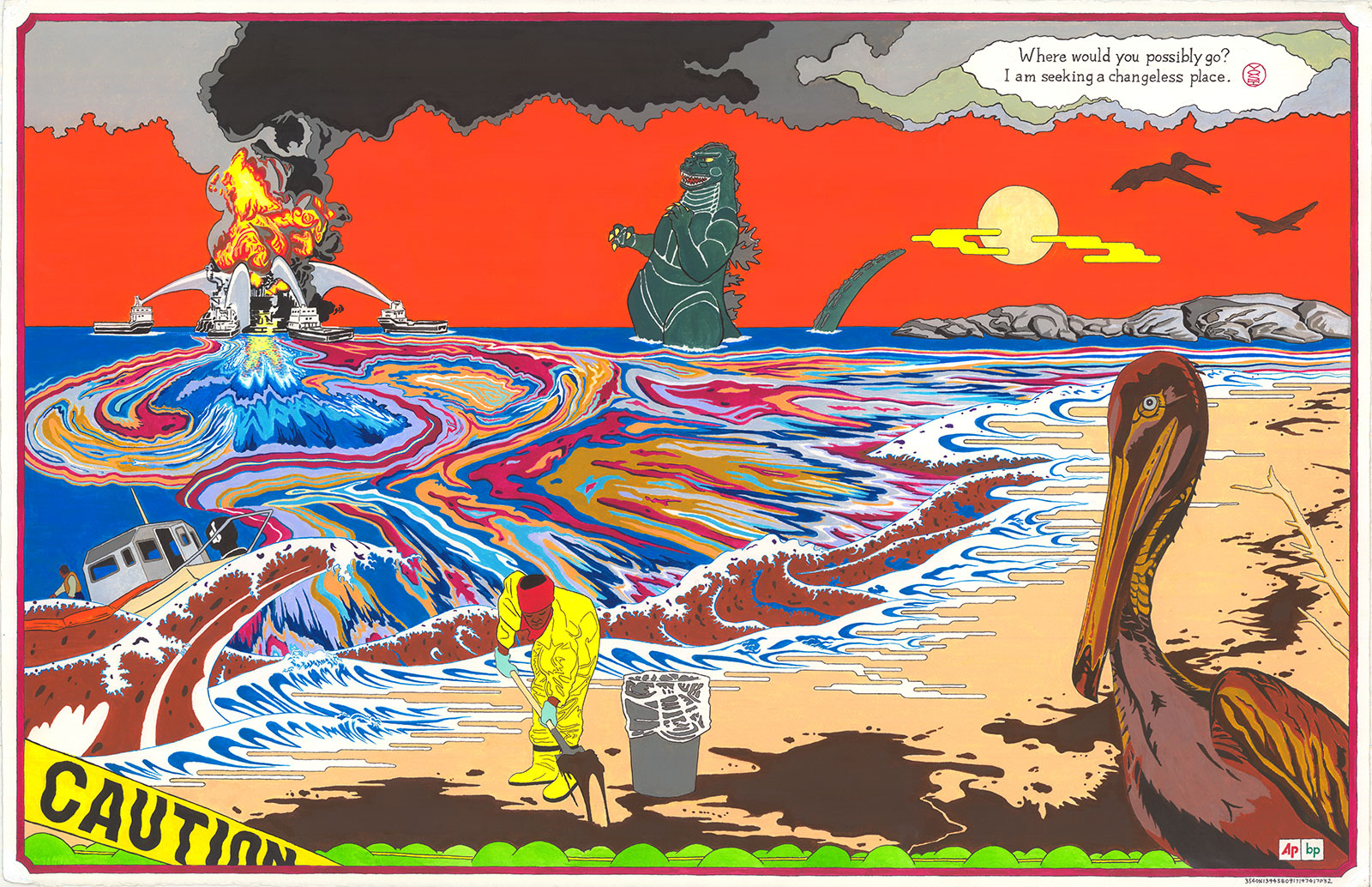
Evanescent Encounter
Jave Yoshimoto, 2010
Gouache on paper, 26″ x 40″
Image © 2010, courtesy of the artist
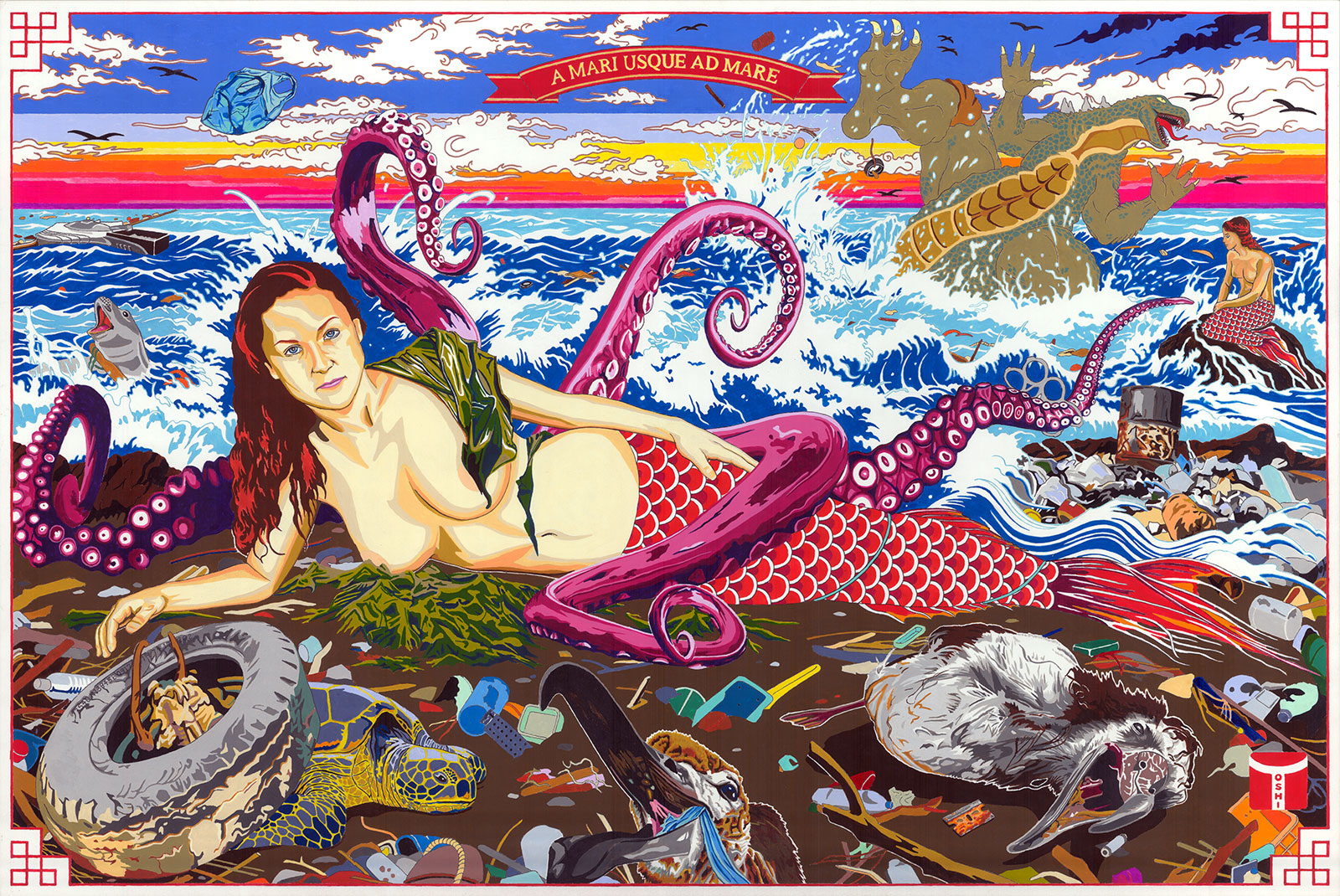
Venus of Trash Isle
Jave Yoshimoto, 2014
Gouache on paper, 20″x30″
Image © 2014, courtesy of the artist
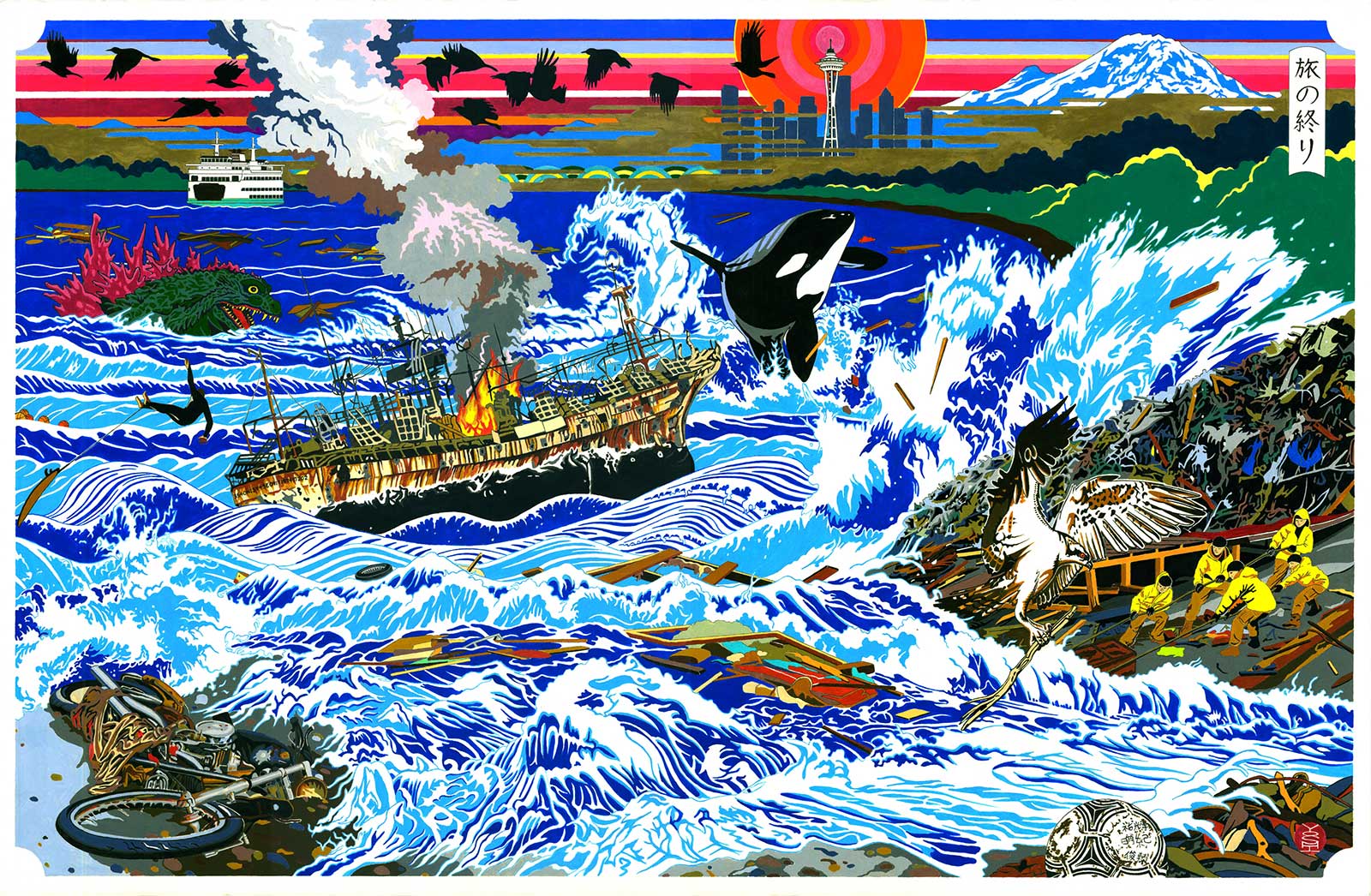
Vultures of Fragments Past
Jave Yoshimoto, 2013
Gouache on paper, 26″ x 40″
Image © 2013, courtesy of the artist
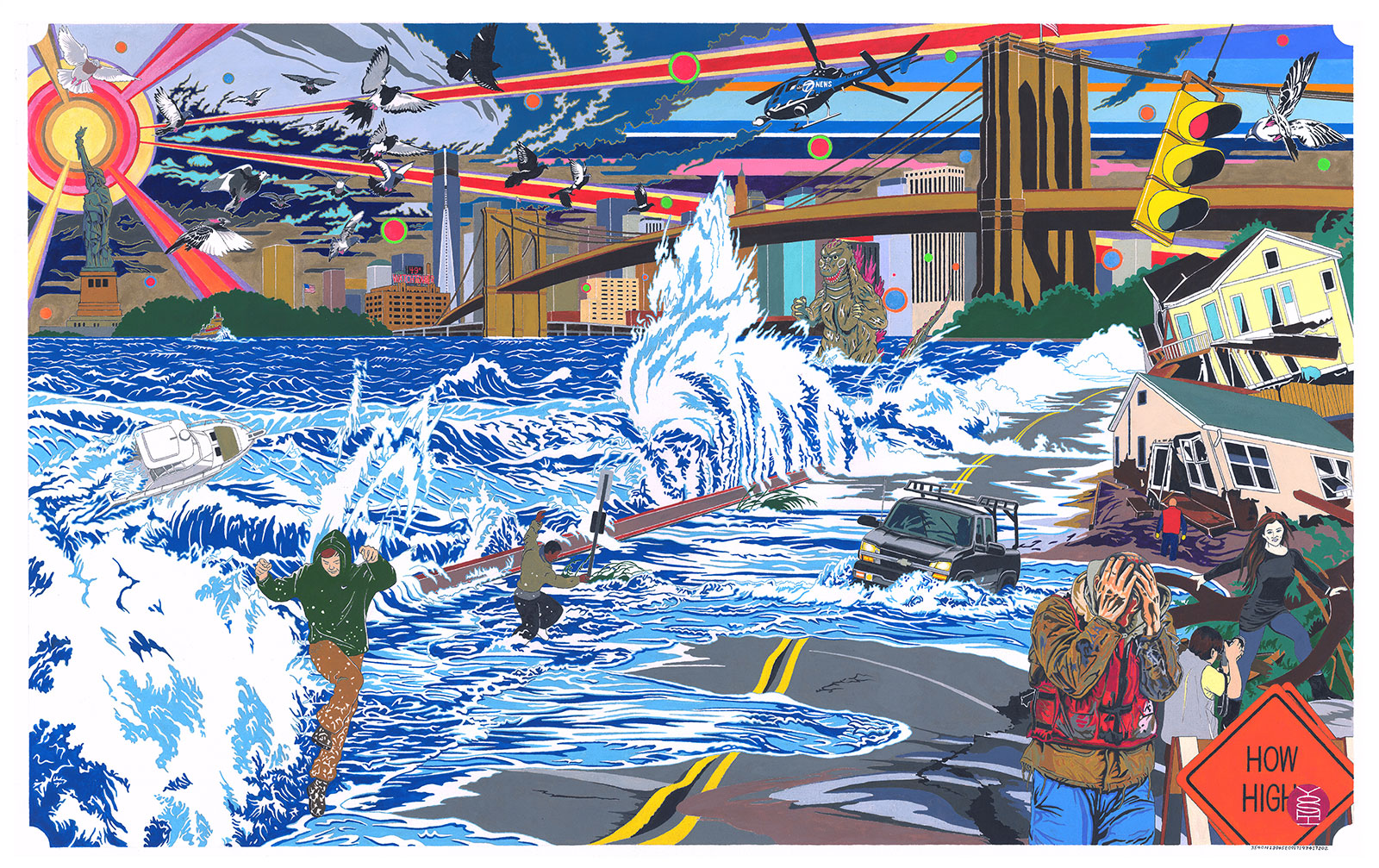
In A New York Minute
Jave Yoshimoto, 2013
Gouache on paper, 26″ x 41″
Image © 2013, courtesy of the artist
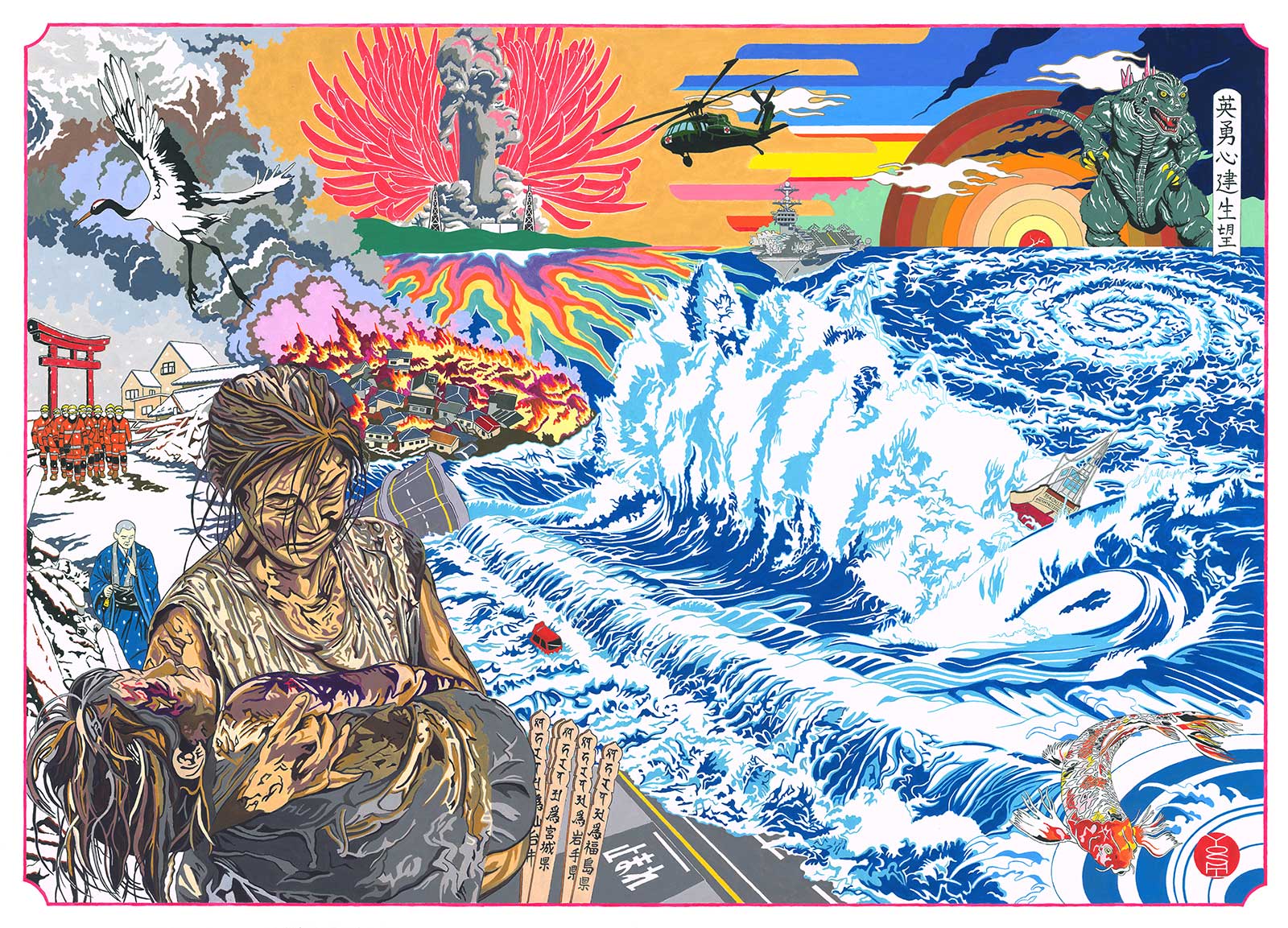
Harbinger of Late Winter Day's Dusk
Jave Yoshimoto, 2012
Gouache on paper, 30″ x 41″
Image © 2012, courtesy of the artist
About the Artist
Jave Yoshimoto creates brilliantly-colored gouache paintings that infuse traditional japanese prints with contemporary depictions of modern disasters. He entices his viewers with stunning, colored-block images and captures their undivided attention with poignant depictions of destruction, both natural and manmade. He works in a graphic style reminiscent of Japanese Manga, loading his work with the saturated imagery and emotion often associated with modern-day media coverage of such events. Born in Japan to Chinese parents, but raised in America, Yoshimoto often explores the convergence of tradition and contemporary society in his work and is influenced by pop culture in America, China, and Japan. Yoshimoto created a series of paintings addressing environmental destruction by humans. In “Evanescent Encounter,” he paints a blood-red sky above a sea of swirling toxic color leaking from an offshore oil rig that burns in the distance. He depicts a man attempting to remove pools of crude oil from the shore, as an oil-soaked pelican and Godzilla look on. In another work in the series, he presents two mermaids on a beach that is heavily saturated with garbage, material waste and deceased wildlife. In these works, Godzilla, who is often used by Yoshimoto to represent himself, appears to be as powerless as the other victims of the unfolding disaster, despite his size and power. This feeling of powerlessness is put into words in “Evanescent Encounter,” as Yoshimoto asks and answers a haunting question: “Where would you possibly go? I am seeking a changeless place.” In his most monumental work in the disaster series, Yoshimoto created a 30-foot scroll entitled, “Baptism of Concrete Estuary,” whose alarming juxtaposition of the idyllic and the disastrous contrasts brilliantly-colored landscapes with scenes of the destruction caused by the tsunami and earthquake in Northeastern Japan. In other works, the source of the disaster is more ambiguous, but the havoc unleashed is every bit as dramatic. Both a nod to his cultural heritage and an introspective look into humanity in the face of natural and man-made disaster, Yoshimoto’s paintings are beautiful and thoughtful studies of reciprocal destruction between people and the natural environment.
Explore These Artworks
In the artist’s words:
“My work takes on the ephemerality of news and information and how the emotions we bring to each tragedy in the news cycle are swept away by the wave of information that floods the media. I address this social amnesia through my art with the work acting as a social memory for tragic events so quickly forgotten in our information age.”
“Baptism of Concrete Estuary” is the culmination of my knowledge and techniques. Through years of striving to find the means to articulate my personal vision, a process that I found moving from small to medium sized paintings to this monumental work. My intention in creating a 30 feet scroll painting was that the audience would be able to have an intimate look at the painting as in traditional Chinese and Japanese scroll, while also feeling overwhelmed by the massiveness of the paper in comparison to the individual.
Employing images of the overwhelming power of the Japanese tsunami and earthquake to inspire empathy in the painting’s viewers. I used visual color blocks and large fields to draw in the audience for a closer view, while the finer details of the piece keep the audience fixated and allow them to feel immersed in the painting themselves.”
Will climate change increase the frequency of extreme weather events? In thisarticle, National Wildlife Federation discusses the impact of the changing climate on hurricanes, heat waves, drought, wildfires, floods and winter weather.
Reserved for art-interpretive content.
Featured Actions:
* Kick the bottled water habit! Drink tap water in a reusable water bottle.
* Reduce the use of disposable plastic bags and containers! Bring a canvas bag and reusable containers to carry groceries and leftovers instead of using new plastic bags and containers.
* Your pledge will be counted in Earth Day Network’s “A Billion Acts of Green” campaign. Learn more about this campaignhere.
Reserved for future conversations.











